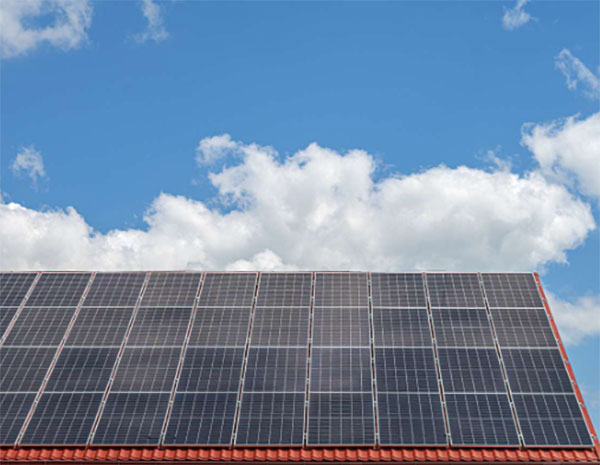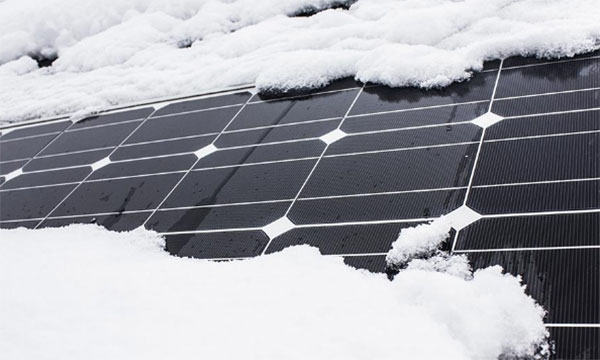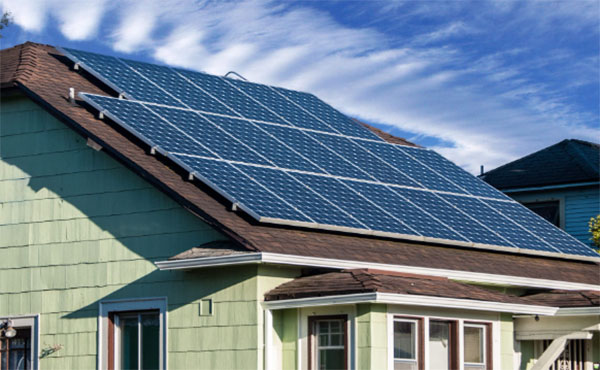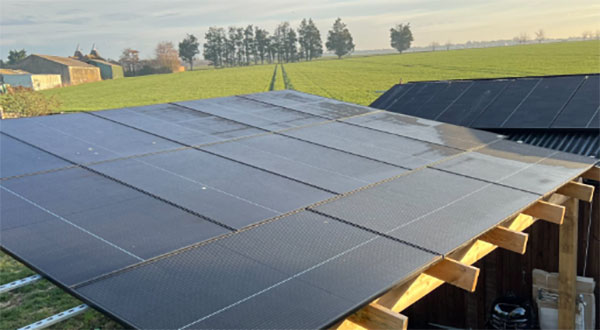Description
Solar panels offer cleaner, renewable energy with lower lifetime emissions and increasingly competitive efficiency compared to fossil fuels.

Factors Influencing Solar Panel Efficiency
Solar panel efficiency is a pivotal factor determining the effectiveness and feasibility of solar energy systems. Understanding the elements that impact this efficiency is essential for maximizing output and ensuring a cost-effective investment.
Sunlight Intensity Variations
The intensity of sunlight that reaches the solar panels is not constant and varies according to geographic location, time of day, and season. Generally, the power output of a solar panel is directly proportional to the sunlight intensity. In optimal conditions, a standard solar panel can produce around 200 to 250 watts per square meter. However, factors like cloud cover or shading can reduce this output significantly.
Angle of Solar Incidence
The angle at which sunlight strikes the solar panels, known as the angle of incidence, greatly affects their efficiency. Panels are most efficient when the sun's rays are perpendicular to them. To optimize this, solar panels can be installed at a tilt based on latitude or even equipped with
tracking systems to follow the sun's path, enhancing the intensity of incident sunlight throughout the day.
Ambient Temperature Effects
Contrary to intuition, solar panels operate less efficiently in very hot conditions. As ambient temperature rises, the semiconductor materials in solar panels produce less electrical current for the same amount of sunlight. Most solar panels are tested at 25°C (77°F), and their efficiency drops by about 0.5% for every 1°C increase above this temperature. High-quality solar panels maintain their efficiency better under high temperatures, a characteristic reflected in their temperature coefficient, typically ranging between -0.2% and -0.5% per degree Celsius.

Seasonal Impact on Solar Energy Production
The efficiency and productivity of solar panels are significantly influenced by seasonal changes, primarily due to variations in sunlight exposure, angle of incidence, and ambient temperature.
Summer Solar Production Characteristics
- Higher Sunlight Intensity: During summer, the solar panels receive more intense sunlight due to the sun's higher position in the sky. This typically leads to a higher power output, with peak production often observed around midday.
- Longer Daylight Hours: Extended daylight hours in summer contribute to a longer production time each day, significantly increasing the total energy yield.
- Ambient Temperature Effects: Although summer provides more sunlight, the high temperatures can reduce the efficiency of solar panels. A panel's power output might decrease by 0.5% for every 1°C rise above 25°C.
Winter Solar Production Characteristics
- Reduced Sunlight Intensity: The sun is lower in the sky during winter, leading to less intense sunlight striking the panels.
- Shorter Daylight Hours: Fewer daylight hours result in a shorter window for solar energy production.
- Snow and Ice Accumulation: In some regions, snow and ice can cover panels, drastically reducing their efficiency. However, the cooler temperatures can increase panel performance, as long as the panels are clear of snow and ice.
Comparing Seasonal Output Variations
- Variation in Power Output: Solar panels can produce up to 30-50% more energy in summer compared to winter, depending on the location and specific weather conditions.
- Cost Implications: While the energy yield is higher in summer, the cost of cooling systems to maintain optimal panel temperature can add to the operational expenses.
- Efficiency Management: Implementing adjustable panel mounts or solar tracking systems can partly mitigate the seasonal variations in solar output.

Technological Adaptations for Seasonal Variability
Adapting solar panel installations to counteract seasonal variability is crucial for maximizing energy production throughout the year. Technological advancements and strategic installation choices can significantly optimize the performance of solar panels.
Solar Panel Tilt and Orientation
The tilt and orientation of solar panels are pivotal factors that influence their ability to capture sunlight effectively.
- Optimal Tilt Angle: Adjusting the tilt angle of solar panels to match the latitude of the location can maximize solar absorption, especially during peak solar months. In winter, increasing the tilt angle helps shed snow and capture the lower-angled winter sun.
- Orientation for Maximum Exposure: Panels are typically oriented true south in the northern hemisphere (or true north in the southern hemisphere) to maximize sun exposure. Deviations can be made to adjust for specific seasonal patterns or to accommodate structural constraints.
Solar Tracking Systems
Solar tracking systems dynamically adjust the orientation of solar panels to follow the sun's path, maximizing the direct exposure of panels to sunlight.
- Single-Axis Trackers: These systems rotate panels around one axis, usually aligned north-south, allowing them to track the sun from east to west during the day. This can increase energy production by up to 25% compared to fixed panels.
- Dual-Axis Trackers: These systems offer two degrees of movement, enabling panels to not only track the sun from east to west but also adjust their tilt to account for the sun's elevation changes throughout the year. This can lead to an increase in energy production of up to 35-40% compared to fixed panels.
- Considerations for Implementation:
- Cost vs. Benefit Analysis: While tracking systems can significantly increase output, they also add to the initial investment and maintenance costs. Evaluating the cost-benefit ratio is crucial, especially for large-scale installations.
- Durability and Reliability: Moving parts in tracking systems can be prone to wear and require regular maintenance. Choosing robust systems with solid warranties can mitigate these issues.

Energy Storage and Management
Effective energy storage and management are key to maximizing the benefits of solar power, ensuring a stable supply even when sunlight is insufficient. Advanced battery storage solutions and grid integration strategies like net metering can significantly enhance the usability and efficiency of solar energy systems.
Battery Storage Solutions
Battery storage systems allow for the storage of excess solar energy produced during peak sunlight hours, making it available for use during low production periods or at night.
- Types of Batteries:
- Lead-Acid Batteries: Cost-effective and widely used but have a shorter lifespan and lower depth of discharge (DoD) compared to other types.
- Lithium-Ion Batteries: More expensive but offer a higher DoD, longer lifespan, and require less maintenance.
- Flow Batteries: Emerging technology that offers long cycle life and quick response times but is generally larger and more complex.
- Key Considerations:
- Capacity & Power: Capacity (measured in kilowatt-hours, kWh) determines how much energy can be stored, while power (measured in kilowatts, kW) dictates how much energy can be delivered at a given moment.
- Depth of Discharge (DoD): The percentage of the battery that has been discharged relative to the overall capacity. A higher DoD indicates a more usable battery capacity.
- Efficiency: The ratio of energy output to energy input. Higher efficiency means more of your stored energy can be used.
- Lifespan & Warranty: The number of charge/discharge cycles a battery can undergo before its performance degrades significantly. A longer lifespan and comprehensive warranty can offset higher upfront costs.
Grid Integration and Net Metering
Integrating solar energy systems with the power grid and utilizing net metering policies allows for a more efficient and reliable energy supply.
- Grid Integration: Solar systems can be connected to the local power grid, providing a backup source of electricity and the potential to sell excess energy back to the utility company.
- Net Metering: A billing mechanism that credits solar energy system owners for the electricity they add to the grid. For example, if a residential customer has a solar system on their home's rooftop, it may generate more electricity than the home uses during daylight hours. With net metering, the homeowner is only billed for their "net" energy use.
- Benefits:
- Reduced Energy Bills: Homeowners can significantly offset their electricity costs by earning credits for the surplus energy their system produces.
- Increased Grid Stability: Solar systems can help stabilize the grid during peak demand times, reducing the need for additional power plants and infrastructure.
- Environmental Impact: Net metering promotes the use of clean, renewable energy, contributing to reduced greenhouse gas emissions and a smaller carbon footprint.

Maintenance and Performance Optimization
Maintaining and optimizing the performance of solar panels is crucial for ensuring long-term efficiency and maximizing the return on investment. Regular maintenance routines coupled with performance monitoring can significantly extend the lifespan of solar energy systems and optimize their output.
Seasonal Maintenance Tips
Seasonal maintenance is essential for the optimal performance of solar panels, as varying weather conditions can impact their efficiency.
- Spring and Summer:
- Cleaning: Remove any debris, dust, or bird droppings that can obstruct sunlight and reduce efficiency. A clean panel can produce up to 30% more energy than one covered in dust or dirt.
- Inspection for Damage: Winter weather can cause wear or damage. Inspect for cracks or discoloration that may indicate underlying issues.
- Fall and Winter:
- Clearing Leaves and Snow: Ensure panels are clear of leaves in the fall and snow in the winter. Even a small amount of shading can significantly reduce power output.
- Tilt Angle Adjustment: Consider adjusting the tilt of your panels to capture the lower winter sun, if your setup allows it.
Performance Monitoring and Upkeep
Regular monitoring and upkeep of solar panels can preemptively identify and address issues, ensuring sustained performance.
- Monitoring Systems: Install monitoring systems to track the performance of your solar panels in real-time. This can help in identifying any inefficiencies or drops in power output.
- Professional Inspections: Schedule annual inspections with a certified technician to ensure all components of your solar system are functioning optimally.
- Component Upgrades: Keep an eye on technological advancements. Upgrading components such as inverters or adding battery storage can enhance the overall performance and efficiency of your system.
- Documentation and Warranties: Maintain detailed records of maintenance activities, repairs, and warranty information. This can be crucial for insurance claims or warranty services.
Case Studies and Real-World Data
Examining real-world case studies and data can provide valuable insights into the performance, efficiency, and real-life challenges and successes of solar energy systems in both residential and commercial settings.
Residential Solar Output Analysis
Residential solar installations have become increasingly popular, offering homeowners the chance to reduce their energy bills and carbon footprint. Here's what analysis of real-world data has shown:
-
- Average Energy Production: Residential solar systems typically range in size from 4 kW to 8 kW and can produce around 3,000 to 6,000 kWh of electricity per year, depending on location, panel orientation, and other factors.
- Return on Investment (ROI): With the decreasing cost of solar panels and available tax incentives, the average ROI period has been observed to be around 5 to 10 years.
- Impact of Net Metering: In areas where net metering is available, homeowners can see a significant reduction in their net energy costs, sometimes even earning a net credit on their utility bills during peak production months.
- Maintenance Costs: Regular maintenance costs are relatively low, generally involving periodic cleaning and occasional inverter replacement over the lifetime of the system.
Commercial Solar Efficiency Case Studies
Commercial solar projects are often larger and involve additional complexities, but they also offer substantial opportunities for cost savings and sustainability initiatives.
- Scale and Efficiency: Commercial installations can range from small rooftop systems of a few kW to large-scale solar farms exceeding multiple MW. Larger scale systems can benefit from economies of scale, often achieving a lower cost per watt installed.
- Energy Independence: Businesses can significantly reduce their reliance on the grid, leading to more predictable energy costs and protection against fluctuating energy prices.
- Sustainability and Corporate Responsibility: Companies with solar installations often benefit from an enhanced public image, showcasing their commitment to sustainability and reducing their carbon footprint.
- Government Incentives and Tax Benefits: Many businesses can take advantage of government incentives, grants, and tax benefits to offset the initial cost of solar installations.








